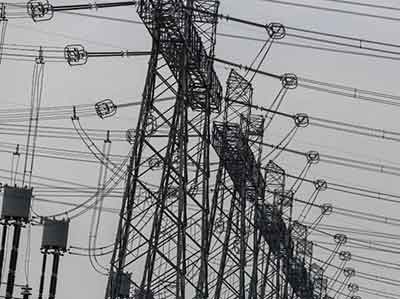Date: 11/03/2023
Relevance: GS-3: Inclusive growth and issues arising from it, Energy.
Key Phrases: Erratic weather, demand-side management, regional disparities, surging power demand, higher economic activity.
Context:
- Surging power demand in India poses a challenge for a country where solar power is growing rapidly but generation capacity is stretched when the sun goes down.
Key Highlights:
- In 2022, India’s power demand grew about 8% — or at nearly double the pace of the Asia Pacific region something to more than 149.7 terawatt-hours (TWh) from the previous year.
- And in the first two months of 2023, demand jumped 10% from a year ago.
- In absolute terms, the states with the strongest growth in demand in 2022 were the northwestern desert state Rajasthan and the western states of Gujarat and Maharashtra, where many of the country’s industries are concentrated.
- The eastern state of Chhattisgarh, known for extensive mining activity, had 16.6% growth in the five months since the monsoon ended in 2022, while Rajasthan’s power demand grew 15.1% in the same period.
- Growth rates were also high in Punjab in the north, where agricultural demand makes up the lion’s share of total power use, and Madhya Pradesh, Telangana and Bihar — where residential demand has historically accounted for most of the load.

Why is Demand Growing?
- Prime Minister and Finance Minister have previously linked increased power demand to higher economic activity.
- Industrial and commercial activity accounts for more than half of India’s annual power use.
- Homes account for a fourth, while agriculture has accounted for over a sixth in recent years.
- Consumption patterns vary wildly by state and season.
- A heatwave and easing of COVID-19 curbs drove power to demand higher in the first half of 2022.
- Erratic weather and a jump in agricultural activity were among the most prominent reasons behind the high growth in the second half of last year.
- In northern Haryana and Telangana in the south, unexpected dry spells contributed to higher demand from agricultural consumers for electricity during November and December.
- Higher demand from industry in Andhra Pradesh and tech employees returning to office in India’s silicon valley Bengaluru in Karnataka state also drove power use up.
- In the football-crazy southern state of Kerala, the live streaming of World Cup matches potentially contributed to a 4.1% hike in peak demand, a power ministry official said in the presentation.
- In Punjab, a policy to provide free power to some consumers boosted demand, while a decision to increase hours of power supply to agricultural consumers in Rajasthan resulted in a 22% rise in November and a 15% rise in power demand in December.
Steps Taken by the Government:
- Firstly, the government is working to increase the country's coal and hydropower capacity, which is needed to meet the demand during nighttime when solar capacity is not available.
- The government is also exploring other options such as battery storage and natural gas-powered plants to provide backup power.
- Secondly, the government is promoting energy efficiency measures, including the adoption of LED lighting and efficient air conditioning systems, to reduce overall power consumption.
- Thirdly, the government is implementing demand-side management measures, such as time-of-day tariffs and peak load management, to incentivize consumers to reduce power usage during peak demand hours.
- Lastly, the government is encouraging the development of renewable energy sources, such as wind and biomass, to diversify the country's energy mix and reduce reliance on traditional sources like coal.
Conclusion:
- The surging power demand in India poses significant challenges for the country's energy sector, particularly in ensuring an uninterrupted power supply and diversifying its energy mix.
- Overall, addressing the surging power demand in India will require a multi-pronged approach that includes increasing capacity, promoting energy efficiency, implementing demand-side management measures, and developing renewable energy sources.
- While the government has made efforts to promote renewable energy sources, such as solar power, more needs to be done to accelerate the transition toward a cleaner and sustainable energy system.
- Furthermore, addressing regional disparities in energy consumption and promoting a more equitable and sustainable energy system will require innovative policy solutions and stakeholder engagement.
- With the right policies and investments, India can address the challenges of surging power demand and build a more resilient, efficient, and sustainable energy system.
Source: The Indian Express
Mains Question:
Q. The surging power demand in India poses a significant challenge to the country's growing solar power industry. Examine the factors contributing to the rapid growth in demand and suggest measures that the government can take to address the issue. (250 Words).







